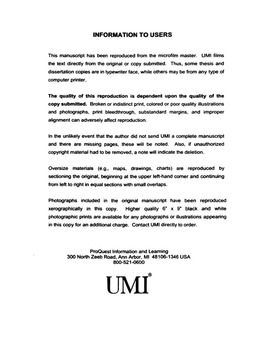| dc.contributor.advisor | Bagajewicz, Miguel J., | en_US |
| dc.contributor.author | Ji, Shuncheng. | en_US |
| dc.date.accessioned | 2013-08-16T12:18:26Z | |
| dc.date.available | 2013-08-16T12:18:26Z | |
| dc.date.issued | 2001 | en_US |
| dc.identifier.uri | https://hdl.handle.net/11244/395 | |
| dc.description.abstract | Crude distillation is the first processing unit in the refinery. It separates the crude in to distillates, which are either intermediate products further processed or raw materials for the chemical industry. Crude distillation consumes fuel in the equivalent of 2% of the crude processed. This dissertation proposes a rigorous procedure that uses simulators that are able to rigorously represent the column operating conditions as a function of the design parameters and complements it with heat exchanger network design methods. Targeting procedures for both atmospheric distillations and complete distillations are presented. These procedures use a heat demand-supply diagram and commercial software to determine the energy targets for a plant processing several crude oils. These procedures allow each crude to be processed at optimal conditions. Two important alternative designs, the preflash design and stripping-type design have been studied in detail. A rigorous definition for "carrier effect" is provided and the role of light components in the crude distillation is analyzed. The impact of the different heating pattern in the stripping-type design is analyzed and compared with the conventional design. It is concluded that a stripping-type distillation is less competitive than the conventional design in terms of energy consumption and investment cost. The problem of designing a multi-period heat exchanger network for a complete distillation plant is addressed. The plant has a preflash drum to facilitate the processing of light crudes. A new concept, matching pattern, is proposed to capture the heat exchange topology features. The dissertation also proposes a methodology to develop new designs and provides some examples that are proven promising. | en_US |
| dc.format.extent | ix, 204 leaves : | en_US |
| dc.subject | Engineering, Chemical. | en_US |
| dc.subject | Petroleum Refining. | en_US |
| dc.subject | Petroleum refineries. | en_US |
| dc.title | Optimal design of crude oil distillation plants. | en_US |
| dc.type | Thesis | en_US |
| dc.thesis.degree | Ph.D. | en_US |
| dc.thesis.degreeDiscipline | School of Chemical, Biological and Materials Engineering | en_US |
| dc.note | Source: Dissertation Abstracts International, Volume: 62-10, Section: B, page: 4656. | en_US |
| dc.note | Adviser: Miguel J. Bagajewicz. | en_US |
| ou.identifier | (UMI)AAI3029622 | en_US |
| ou.group | College of Engineering::School of Chemical, Biological and Materials Engineering | |
